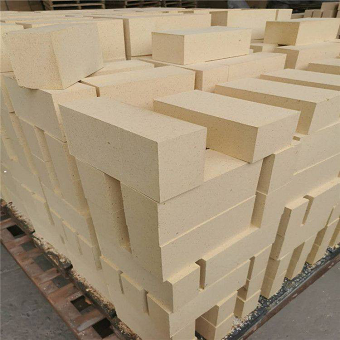High-quality thermal insulation refractory bricks
Jun 15, 2022
Thermal insulation refractory bricks refer to refractory materials with high porosity, low bulk density and low thermal conductivity. Insulation refractory material is also called lightweight refractory material. It includes the following categories.
(1) High-alumina heat-insulating light-weight refractory bricks. It is an insulating light refractory brick with bauxite as the main AL2O3 content of not less than 48%. The production process adopts the foam method, and the burn-out addition method can also be used. High-alumina heat-insulating lightweight refractory bricks can be used to build heat-insulating layers and places where there is no strong high-temperature molten material erosion and scouring. When in direct contact with the flame, the surface contact temperature of general high-alumina heat insulating refractory bricks shall not be higher than 1350℃. Mullite heat-insulating refractory bricks can directly contact the flame, and have the characteristics of high temperature resistance, high strength and remarkable energy saving effect.
(2) Clay heat-insulating lightweight refractory bricks are heat-insulating refractory bricks with AL2O3 content of 30% to 48% made of refractory clay as the main raw material. Its production process adopts burn-out plus character method and foam method. Using refractory clay. The output of clay heat insulating bricks accounts for more than half of the total output of heat insulating refractory bricks.

According to the Chinese standard (GB 3994-1983), clay insulation bricks are divided into NG-1.5, NG-1.3a, NG-1.3b, NG-1.0, NG-0.9, NG-0.8, NG-0.7, NG according to bulk density -0.6, NG-0.5, NG-0.4 10 grades.
(3) Diatomite heat-insulating lightweight refractory bricks are heat-insulating refractory products made of diatomite as the main raw material. It is mainly used for thermal insulation below 900℃.
The Chinese standard (GB 3996-1983) divides diatomite thermal insulation products into GG-0.7a, GG-0.7b, GG-0.6, GG-0.5a, GG-0.5b and GG-0.4 according to the bulk density. species number.
(4) Bricks with floating beads are heat-insulating refractory products made of floating beads as the main raw material. Floating beads are aluminosilicate glass hollow beads floated from the fly ash of thermal power plants. It has light body, thin wall, hollow, smooth surface, high temperature resistance and good thermal insulation performance. Using these excellent properties of floating beads, light-weight thermal insulation refractory materials with excellent thermal insulation properties can be manufactured. The production of bleached bead bricks can be formed by semi-dry method.
Relevant information
-

Main properties of magnesium oxide refractory
Performance characteristics of magnesia refractories and other basic refractories Performance characteristics of magnesia refractories and other basic refractories Refractories containing more than 80% ... -

What properties of lightweight insulation fire clay bricks can be improved by the addition of kyanite?
Lightweight insulation fire clay bricks are a kind of shaped refractory material with clay as the main raw material, which is processed, shaped, dried, and calcined with clay. on the kiln. Due to the r ... -

How is the effect of white fused alumina abrasive used in refractory materials?
After mixing, forming, drying, and firing at high temperature in a shuttle kiln. The product has the characteristics of high refractoriness, good thermal shock stability of white corundum, high high te ... -

Characteristics of refractory magnesia chrome bricks for lime kiln
Lime kilns are mainly classified into square kilns and circular kilns. According to the classification of fired products, they can be divided into lime kilns, ceramic kilns, cement kilns, glass kilns, ...

